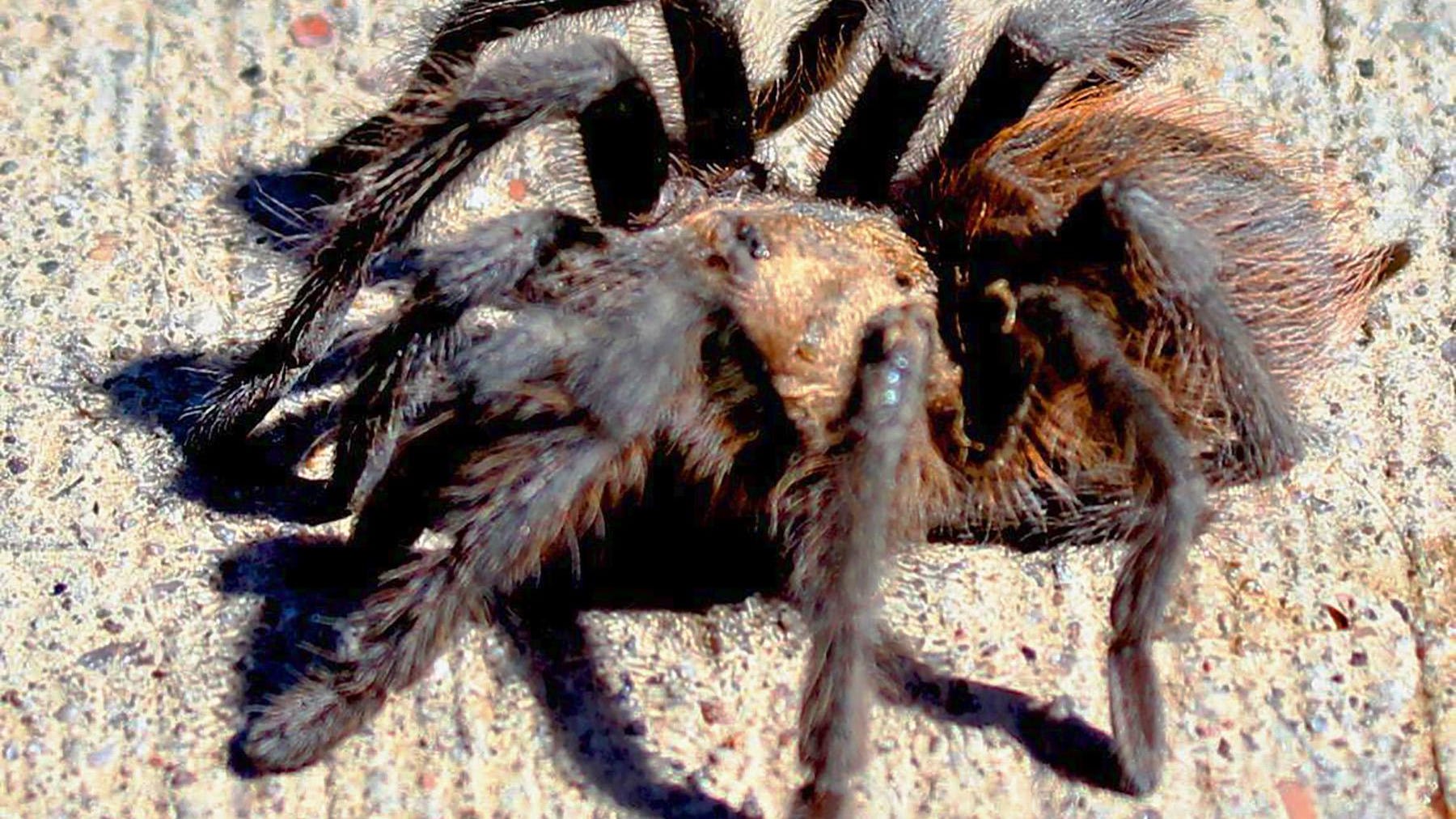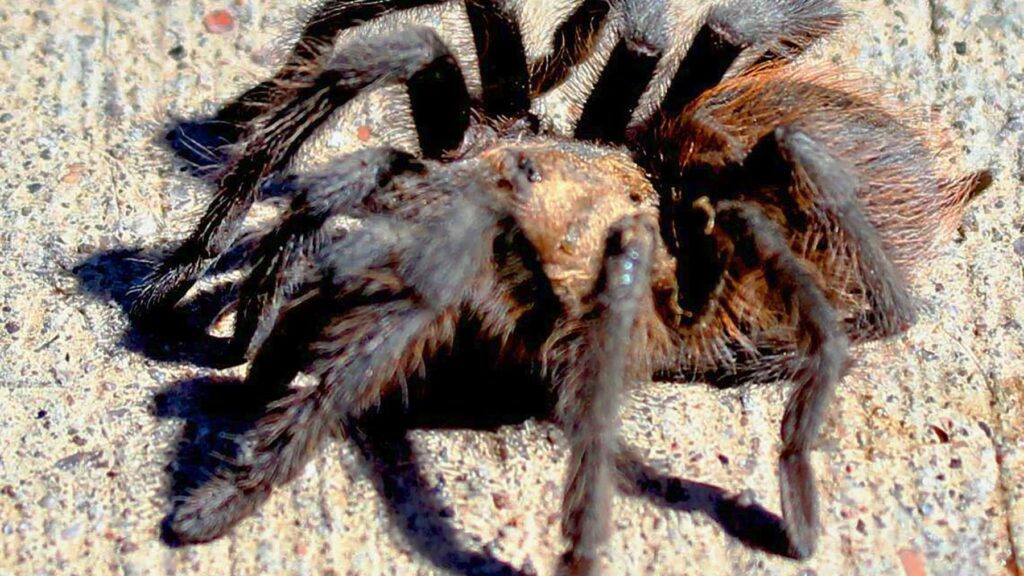
What to know about southern Colorado tarantulas’ fall trek for love
Every fall, male tarantulas go in search of females. It’s a long, treacherous journey fraught with starvation, exposure to predators and deadly traffic
Arizona is home to a diverse range of 30 tarantula species, and the most docile one is the Arizona blonde tarantula. This ground-dwelling spider native to the deserts of Arizona is known for its striking golden-brown coloration.
Arizona blonde tarantulas are favored as pets because they are less likely to bite than some other tarantula species and they typically exhibit less aggression.
In Arizona, blonde tarantulas can be found in sandy and rocky areas, often residing in burrows they dig or take over. They are fairly common, particularly in the southwestern part of the state, where they can be seen during the late summer and fall when they are most active.
Here is everything you need to know about Arizona blonde tarantulas.
Are Arizona blonde tarantulas aggressive?
According to Absolute Exterminating, a metro Phoenix pest control service, Arizona blonde tarantulas are generally not aggressive. They are more likely to retreat than to attack when threatened.
We talked to Stephen Shuster, a professor of invertebrate zoology at Northern Arizona University in Flagstaff, who said Arizona blonde tarantulas that feel threatened may raise their front legs as a warning or eject urticating hairs from their abdomen, which can irritate if they come into contact with skin or eyes.
Do Arizona blonde tarantulas bite?
Yes, Arizona blonde tarantulas can bite, but they do so rarely and usually only as a last resort when they feel threatened or provoked.
“They bite only if severely harassed. But that depends too on what you consider harassment. It’s a good idea to be very gentle and careful when handling any spider,” said Shuster.
How venomous are Arizona blonde tarantulas?
Arizona blonde tarantula venom is not considered dangerous to humans and is comparable to a bee or wasp sting. The venom is primarily meant to subdue prey, such as insects, rather than harm larger animals or humans. For most people, a bite may cause minor symptoms like localized pain, redness and swelling.
How big do Arizona blonde tarantulas get?
According to A-Z Animals, adult females typically have a leg span of about 4.5 to 6 inches and a body length of 2 to 3 inches. Males are generally smaller, with a leg span of approximately 3.5 to 4.5 inches and a body length slightly less than that of females.
“Aphonopelma chalcodes (scientific name for the Arizona blonde tarantula) is found mainly in southern Arizona and northern Sonora, mostly in desert habitats. It gets bigger and is more robust looking than some of the other Arizona tarantulas, probably because it has more and denser setae and sensillae (hairs) on its body,” said Shuster.
Do Arizona blonde tarantulas climb?
Arizona blonde tarantulas can climb, but they are primarily a ground-dwelling species and prefer to stay close to the ground. While they can climb low vegetation or rough surfaces if needed, they are not as adept climbers as arboreal tarantulas, which are adapted to living in trees and other high places. Their bulky bodies and heavier build make them less suited for extensive climbing.
What are some fun facts about Arizona blonde tarantulas?
Here are some facts from The Tarantula Collective, a website that provides resources, care guides and community forums for tarantula enthusiasts.
Nocturnal hunters: Arizona blonde tarantulas are primarily nocturnal. They spend the daytime hiding in their burrows, emerging after dark to hunt for food.Seasonal appearance: These tarantulas are more likely to be seen above ground during the late summer and fall, especially after monsoon rains. This is also the time when males are often seen wandering in search of mates.Mating rituals: During mating season, male tarantulas leave their burrows to search for females. Once they find a potential mate, males perform a courtship dance, tapping and drumming their legs on the ground to attract the female’s attention.Taxonomy and classification insights: Shuster said the Arizona blonde tarantula’s scientific name is Aphonopelma chalcodes. “Aphonopelma” refers to the genus, and is the most common genus of tarantulas in the southwestern United States. However, the field of taxonomy (the science of classifying organisms) is constantly evolving, and in the future this genus could be further divided into different genera based on new scientific insights. This means that what is currently classified as Aphonopelma could be reclassified as our understanding of these spiders grows.Do Arizona blonde tarantulas make webs?
Arizona blonde tarantulas use silk in specialized ways rather than spinning traditional aerial webs.
They line the walls and entrance of their burrows with silk to reinforce and smooth their living space, helping to keep out debris. They also create silk mats around their burrow entrances to detect vibrations from prey or threats, according to A-Z Animals.
Additionally, during molting, they spin a silk mat on the ground to provide a soft surface for shedding their exoskeleton.
What do Arizona blonde tarantulas eat?
Arizona blonde tarantulas primarily eat insects and other small invertebrates. Their typical prey includes crickets, grasshoppers, beetles and other arthropods, according to A-Z Animals
Got a story you want to share? Reach out at Tiffany.Acosta@gannett.com. Follow @tiffsario on Instagram.
Support local journalism and subscribe to azcentral.com.
Source link : http://www.bing.com/news/apiclick.aspx?ref=FexRss&aid=&tid=66d897305875478a889a9f2e3ce90fac&url=https%3A%2F%2Fwww.statesman.com%2Fstory%2Fentertainment%2Flife%2F2024%2F09%2F04%2Farizona-blonde-tarantula-facts%2F74906714007%2F&c=12410965871243805530&mkt=en-us
Author :
Publish date : 2024-09-03 13:00:00
Copyright for syndicated content belongs to the linked Source.
